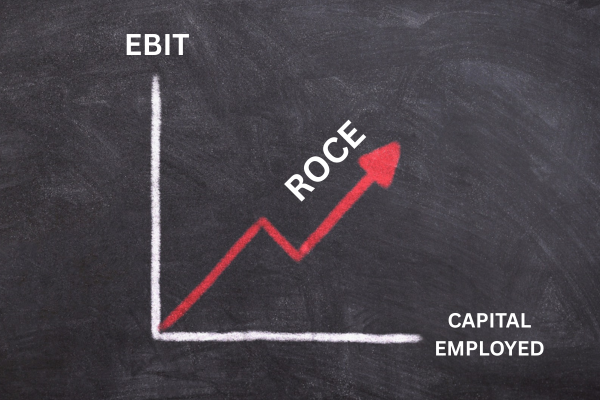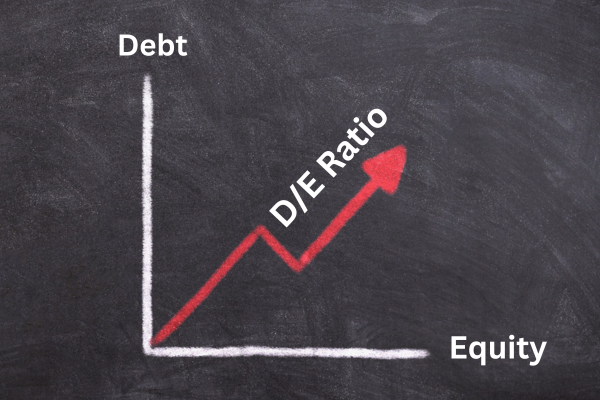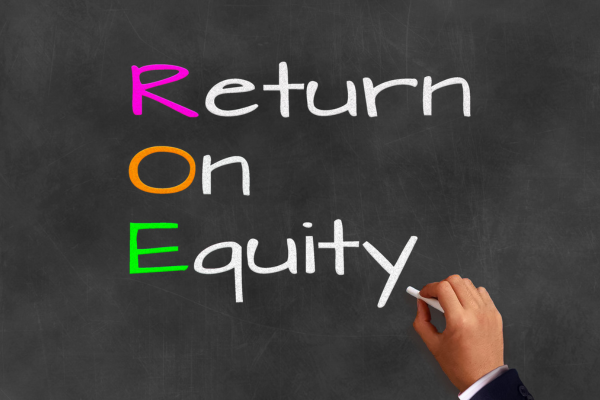ROCE, or Return on Capital Employed, is one of the most powerful financial ratios used by investors to evaluate a company’s profitability and capital efficiency. If you’re looking to analyze businesses more effectively or make better investment decisions, understanding how to calculate ROCE is essential.
In this step-by-step guide, we will break down what ROCE is, why it matters, how it compares to other financial metrics, and how you can calculate Return on Capital Employed for any company with ease.
Table of Contents
What is ROCE (Return on Capital Employed)?
ROCE stands for Return on Capital Employed, a financial ratio that measures a company’s profitability in relation to the total capital it uses. It indicates how efficiently a business is generating profit from its capital, including both equity and debt.
ROCE Formula:
ROCE = EBIT( EARNINGS BEFORE INTEREST AND TAX ) / CAPITAL EMPLOYED x 100
Where:
- EBIT = Operating profit
- Capital Employed = Total Assets − Current Liabilities (or Equity + Non-current Liabilities)
A higher ROCE means the company is using its capital more effectively to generate profits.
Step-by-Step Guide: How to Calculate Return on capital employed
Let’s now go through the process of calculating Return on Capital Employed in simple steps.
Step 1: Find EBIT (Earnings Before Interest and Tax)
You can find EBIT on the company’s profit and loss statement. If it’s not directly mentioned, use the formula:
EBIT = Net Profit + Interest + Taxes
This number reflects the company’s earnings before any financing costs and taxes are deducted.
Step 2: Determine Capital Employed
There are two common methods to calculate capital employed:
Method A: Capital Employed = Total Assets – Current Liabilities
Method B: Capital Employed = Equity + Non-Current Liabilities
Check the company’s balance sheet to gather these figures.
Step 3: Apply the ROCE Formula
Once you have EBIT and Capital Employed, plug the values into the formula:
Return on capital employed = EBIT( Earnings Before Interest and Tax ) / Capital Employed x 100
Step 4: Analyze the ROCE Value
- A high ROCE indicates efficient capital usage.
- A low ROCE could mean the company is struggling to use its capital profitably.
Compare this number with industry peers for a more accurate assessment.
Return on Capital Employed Example Calculation
For Example,
- EBIT = ₹10 crore
- Total Assets = ₹100 crore
- Current Liabilities = ₹50 crore
Capital Employed = ₹100 crore – ₹50 crore = ₹50 crore
Return on Capital Employed= ₹10 crore / ₹50 crore x 100 = 0.2 x 100 = 20%
So, Return on Capital Employed has a 20%, which is a strong indicator of capital efficiency.
Why ROCE is Important for Investors

ROCE plays a crucial role in evaluating companies, especially in capital-intensive industries such as manufacturing, energy, and infrastructure. Here’s why:
- Capital Efficiency: Return on Capital Employed tells you how well a company uses both equity and debt to generate earnings.
- Investment Decision Making: It helps investors compare the profitability of companies in the same sector.
- Long-Term Performance: A consistent and high ROCE over time often signals strong management and sustainable business practices.
ROCE vs ROE vs ROA: What’s the Difference?
| Metric | Formula | Focuses On |
|---|---|---|
| ROCE | EBIT / Capital Employed | Overall capital efficiency |
| ROE | Net Profit / Shareholder’s Equity | Return to shareholders |
| ROA | Net Profit / Total Assets | Efficiency of all assets |
- ROCE is broader as it includes debt and equity.
- ROE only considers shareholders’ returns.
- ROA does not consider how the assets are financed.
Use all three ratios for a more holistic view.
When to Use Return on Capital Employed
- Comparing capital-intensive businesses like telecom, oil & gas, and utilities.
- Evaluating business quality in terms of capital allocation.
- Long-term investing decisions, where efficiency matters.
Avoid using Return on Capital Employed in isolation for financial firms or startups, where other metrics like ROE or revenue growth are more relevant.
What Is a Good ROCE?
While this depends on the industry, here are general guidelines:
- Above 15%: Strong
- 10% – 15%: Moderate
- Below 10%: Weak
Compare Return on Capital Employed across similar companies in the same sector to set a realistic benchmark.
Pros and Cons
Tools and Platforms to Calculate Return on Capital Employed Easily
You can calculate Return on Capital Employed manually from annual reports or use platforms like:
- Screener.in (India-specific)
- Tickertape
- Yahoo Finance
- Moneycontrol
Most of these platforms already display Return on Capital Employed, saving you time.
ROCE is a powerful tool for understanding how well a company uses its capital to generate profits. By learning how to calculate Return on Capital Employed and interpret it wisely, you can make smarter investment decisions and avoid poor-quality companies.
Use Return on Capital Employed in combination with other financial ratios to build a strong foundation for your investment strategy.
Frequently Asked Questions (FAQs)
Q1: What is the difference between Return on Investment (ROI) and Return on Capital Employed?
Return on Investment (ROI) measures overall return on investment, while Return on Capital Employed evaluates profit generated from capital employed, including both equity and debt.
Q2: How to calculate working capital?
Working capital is calculated by subtracting current liabilities from current assets:
Working Capital = Current Assets – Current Liabilities.
Q3: How to improve return on capital employed?
Improve return on capital employed by increasing operating profit, reducing unnecessary capital investments, optimizing asset utilization, and improving cost efficiency and margins.
Q4: What causes Return on capital employed to fall?
Return on capital employed falls due to declining profits, rising capital employed, inefficient asset use, increased debt, or poor cost and investment management.





